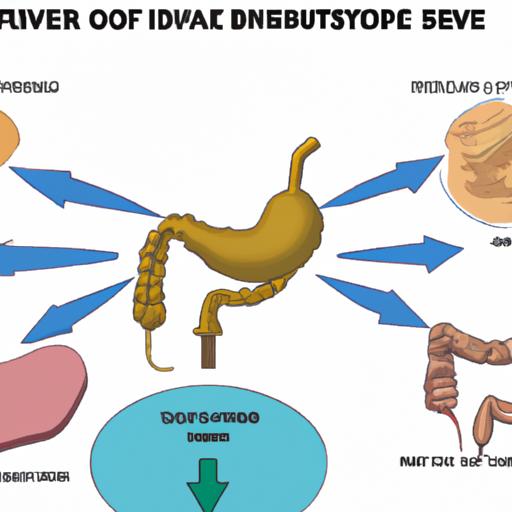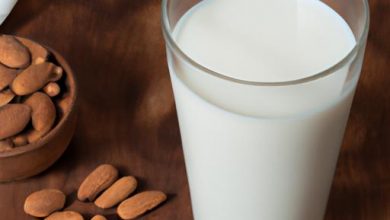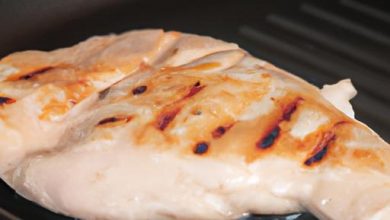What is Holozoic Nutrition?
Holozoic nutrition is a type of nutrition where organisms ingest and digest solid food. This type of nutrition is commonly found in animals that are capable of moving around to obtain their food. Holozoic nutrition is the most common type of nutrition in animals, including humans.
Holozoic nutrition can be divided into three categories: carnivorous, herbivorous, and omnivorous. Each category has its own unique characteristics and dietary requirements.
Types of Holozoic Nutrition

Carnivorous
Carnivorous animals primarily feed on other animals, such as meat, fish, and insects. These animals have specialized teeth and jaws to kill and consume their prey. The digestive system of carnivorous animals is shorter than that of herbivores, allowing for quicker digestion of protein-rich foods.
Herbivorous
Herbivorous animals mainly feed on plants, such as leaves, stems, and roots. These animals have flat teeth and a long digestive tract, allowing them to break down and absorb nutrients from plant material. Herbivorous animals have to eat larger quantities of food to obtain the same amount of energy as carnivorous animals.
Process of Holozoic Nutrition
The process of holozoic nutrition can be divided into four stages: ingestion, digestion, absorption, and egestion.
Ingestion
Ingestion is the process of taking in food through the mouth. Depending on the type of animal, food may be broken down by teeth or other structures before being swallowed.
Digestion
Digestion is the process of breaking down food into smaller molecules that can be absorbed by the body. Digestion begins in the mouth with the release of enzymes. The food then passes through the stomach, where it is further broken down by stomach acid and enzymes. Finally, the food passes into the small intestine, where nutrients are absorbed into the bloodstream.
Stay tuned for the next two sections.
Process of Holozoic Nutrition
Absorption
Absorption is the process of taking in nutrients from the digested food into the bloodstream. Nutrients are absorbed mainly in the small intestine. The walls of the small intestine are lined with tiny finger-like projections called villi, which increase the surface area for absorption.
Egestion
Egestion is the process of eliminating undigested food material from the body. This waste material is eliminated through the anus in the form of feces. Egestion is an essential process that helps to remove waste materials from the body and maintain good health.
Examples of Holozoic Nutrients
Holozoic nutrition provides organisms with a variety of essential nutrients, including proteins, carbohydrates, fats, vitamins, and minerals.
Proteins
Proteins are essential for growth, repair, and maintenance of body tissues. They are made up of amino acids and are found in meat, fish, eggs, and dairy products.
Carbohydrates
Carbohydrates are the main source of energy for the body. They are found in foods such as bread, rice, pasta, and fruits.
Fats
Fats are essential for energy storage, insulation, and protection of organs. They are found in foods such as meat, nuts, seeds, and oils.
Vitamins
Vitamins are essential for maintaining good health and preventing diseases. They are found in a variety of foods, including fruits, vegetables, and dairy products.
Minerals
Minerals are essential for maintaining strong bones, healthy teeth, and normal bodily functions. They are found in a variety of foods, including meat, dairy products, and leafy greens.
By consuming a balanced diet that includes these essential nutrients, organisms can maintain good health and function optimally.
Examples of Holozoic Nutrients
Holozoic nutrition provides a wide range of nutrients that are essential for the growth and development of animals. The primary nutrients obtained through holozoic nutrition include proteins, carbohydrates, fats, vitamins, and minerals.
Proteins
Proteins are an essential nutrient required for the growth and repair of cells in the body. Proteins are obtained through the consumption of meat, fish, eggs, and dairy products.
Carbohydrates
Carbohydrates are the primary source of energy for the body. The body converts carbohydrates into glucose, which is used by the cells for energy. Carbohydrates are obtained through the consumption of grains, fruits, and vegetables.
Fats
Fats are an essential nutrient required for the proper functioning of the body. Fats provide energy, support cell growth, and protect organs. Fats are obtained through the consumption of meat, fish, nuts, and oils.
Vitamins
Vitamins are essential nutrients required for the proper functioning of the body. Vitamins are obtained through the consumption of fruits, vegetables, and dairy products.
Minerals
Minerals are essential nutrients required for the proper functioning of the body. Minerals are obtained through the consumption of fruits, vegetables, dairy products, and meat.
Advantages of Holozoic Nutrition
Holozoic nutrition provides several advantages, including:
Provides energy and nutrients for growth and development
Holozoic nutrition provides a wide range of nutrients that are essential for the growth and development of animals. These nutrients are required for the formation of new cells, the repair of damaged tissues, and the maintenance of overall health.
Allows for a diverse diet
Holozoic nutrition allows animals to consume a diverse range of foods, which can help them obtain a wide range of nutrients. This can be particularly beneficial for animals that live in areas with limited food sources.
Disadvantages of Holozoic Nutrition
Despite its benefits, holozoic nutrition also has some disadvantages, including:
Requires more energy to digest food compared to other types of nutrition
Holozoic nutrition requires more energy to digest food compared to other types of nutrition, such as autotrophic nutrition. This can be a disadvantage for animals that have limited energy reserves or have to hunt for their food.
Ingestion of harmful substances or pathogens can lead to illness or disease
Holozoic nutrition can also increase the risk of ingesting harmful substances or pathogens, which can lead to illness or disease. This risk is particularly high for animals that consume raw or undercooked meat or other foods that may be contaminated.




